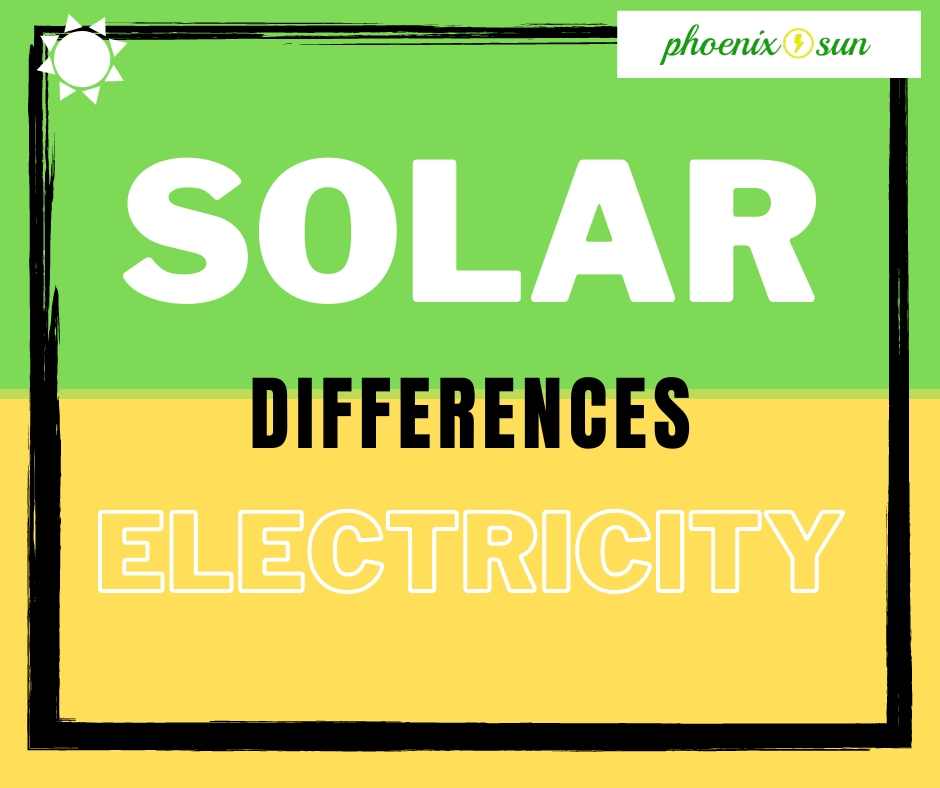What is the difference between solar energy and electricity? The invention of electricity has changed the concept of power and energy. As a man in this developed world, you should know the difference between solar energy and electricity?
Electricity is considered the lifeline of the world. The production system of electricity may vary based on the system of production. The system produces energy from several limited or renewable sources.
The conventional idea of electricity production has changed with the invention of solar energy. Solar energy is now one of the major sources of electric power.
On the other hand, you should compare the system’s cost, installation process, and compatibility with electricity.
This writing will explain the difference between solar energy and electricity, the energy source, set up cost, eco-friendly ideas, the ability to meet human needs, and renewable power sources.
Contents
What is the Difference between Solar Energy and Electricity?
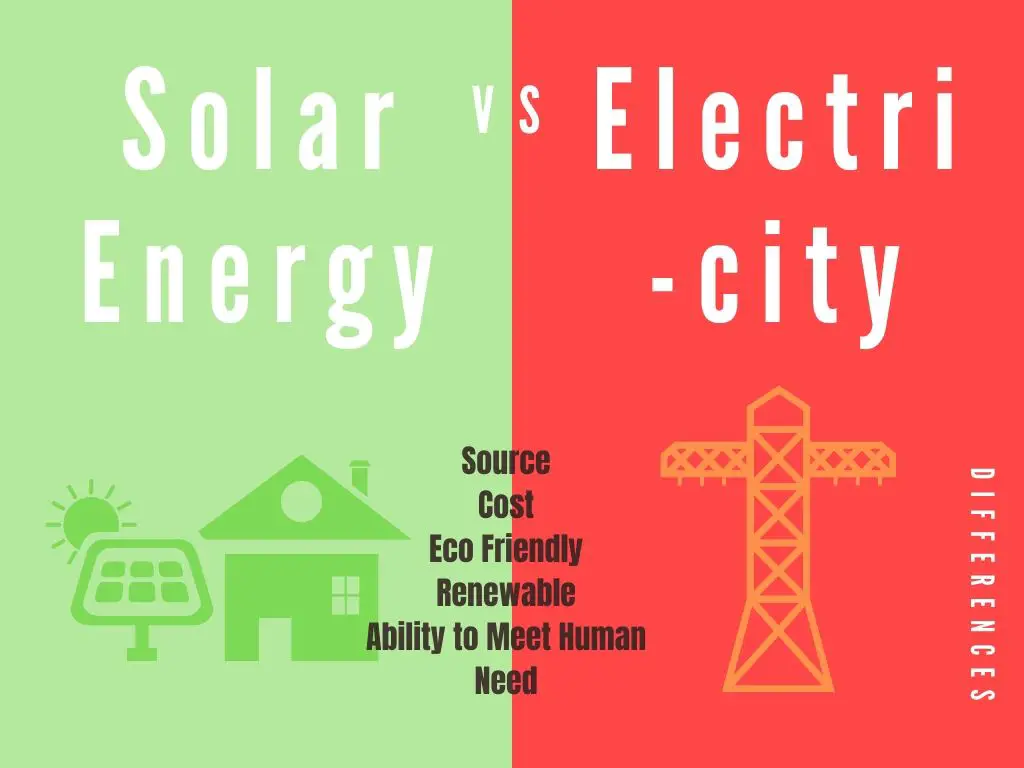
Several differences may be listed between solar energy and electricity. The source of energy is the main difference between solar energy and electricity.
Conventional electricity depends on fossil fuel and coal-powered steam turbines. It also uses petroleum, natural gases, and water to produce electricity.
Natural gases pass through a turbine to spin the turbine, and the fuels are burnt to generate combustion gases. The water stream is used to produce hydroelectricity.
On the contrary, solar energy depends on sunlight. Sun is the only source of raw material to produce solar energy. It transforms the sun’s heat into DC power with the help of solar panels and instruments.
So, the production method, source of energy, and installation process are the main difference between solar energy and electricity.
The Source of the Energy
The source of energy is completely different in solar energy and conventional electricity. These two methods use separate production systems based on the energy source. Let’s explore some significant sources for these two types of electricity.
Energy Source of Electricity
Electricity uses fossil fuel, petroleum, water stream, and natural gases to generate power. It burns fuel to spin the turbines with coal-powered production machinery.
To generate electricity, petroleum is a significant source of conventional energy. Many countries of the world use different petroleum and fuel to produce electricity. Petroleum runs turbines and turns them into electric energy. It is a powerful resource.
Gases are used to spin the turbines and produce electricity. Natural gases may be a great solution, but it has limited stock globally. It’s not a renewable source of energy.
The water stream is one of the significant sources of electricity. Hydroelectricity production depends on the water stream. The natural water stream is used to spin the turbines at a great speed for electricity production.
The energy source of an electric power plant depends on its function and technology. A manufacturer can use any energy source based on the availability and production process.
The increasing demand for electricity makes the production process challenging. The producers use the most suitable energy source for advanced power plants to make electricity affordable and available.
So, these are the most common energy sources of electricity worldwide.
Energy Source of Solar Energy
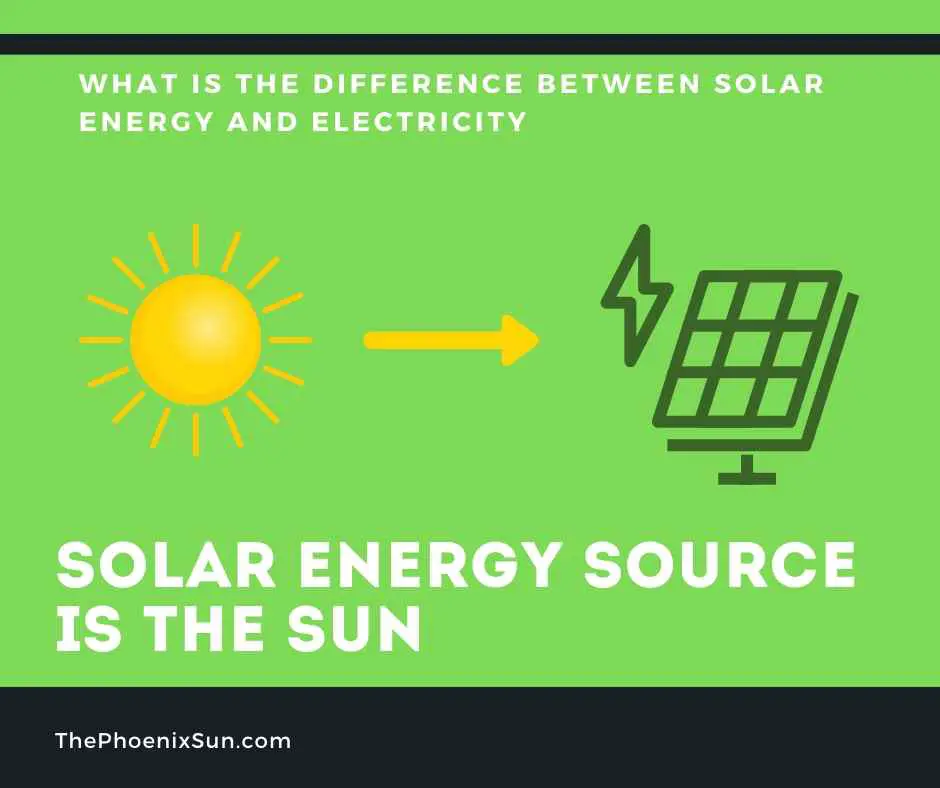
The sun is the source of solar energy. It is a renewable and unlimited source of solar electricity production.
Solar electricity is generated by sunlight and photovoltaics (PV) technologies. This technology requires some devices and specialized components.
Solar panels, batteries, and solar-powered devices are the most important.
Solar panels collect energy from the sun and transform it into the base station. In the base station, a converter converts sunlight into DC electricity stored in the battery. Batteries are connected with several electrical instruments such as lights, fans, television, air conditioner, etc.
The energy source of solar electricity is not limited. It is renewable, and we can get the resource until the world’s destruction. In this sense, it is important to us because limited energy sources will be finished, and we have nothing to use.
At the same time, solar energy is very flexible to use. The sunlight is converted into thermal or electrical energy. It can be used for homes and industries.
So, the sun is a powerful element of the world, and the sunlight is the unlimited source of solar energy to produce solar electricity.
The Cost of Set-Up and Long Term Running
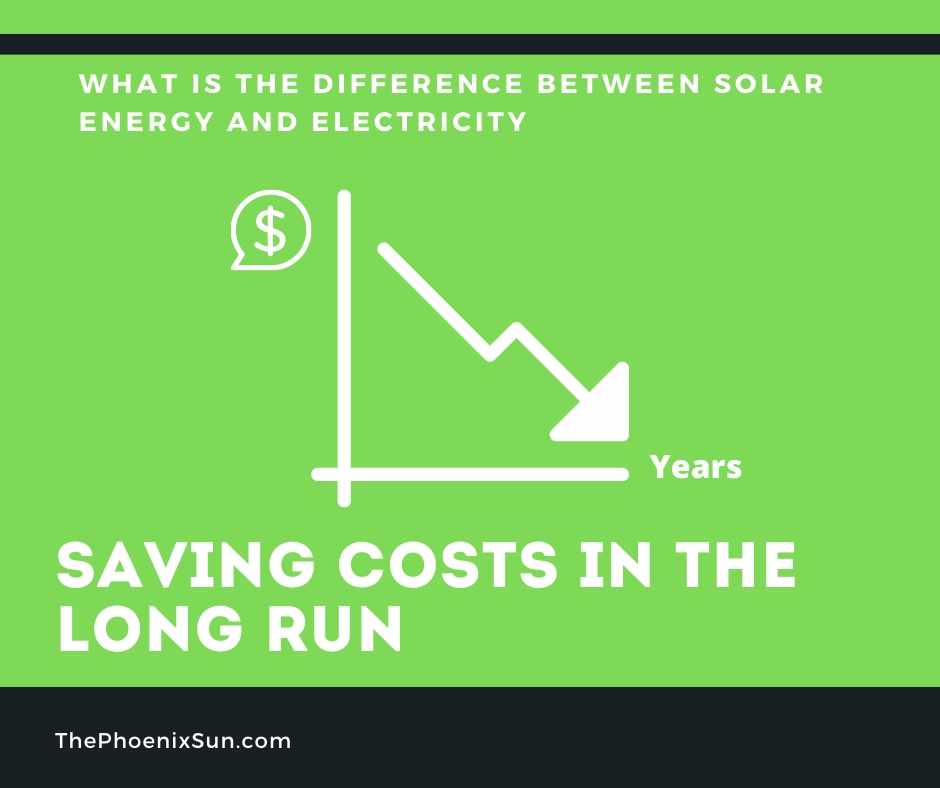
If you want to save electricity costs and escape from unpredictable load shedding, it is a good idea to concentrate on alternative electricity solutions.
The cost of solar panel systems depends on their power and types. You have to consider various things to estimate the setup cost of an effective solar system.
The cost of solar energy set up depends on electricity usage and the number of home appliances. If you have many appliances and a large home, you have to pay a little more. A large house needs several lights and other appliances.
The cost also depends on the types and quality of solar panels and the size of the system. The average solar setup will cost you between $3000 and $8000, including installation costs.
Remember, the solar panel system will be a long-term investment, and the primary solar panel costs are higher than the electricity connection.
Besides, conventional electricity requires monthly costs, depending on your electricity usage. It doesn’t require any setup costs.
But solar electricity will remove your monthly electricity cost at least for 25 years. In this case, the primary investment will give you free electricity from solar energy. So, solar energy will be profitable for many years.
Eco Friendly
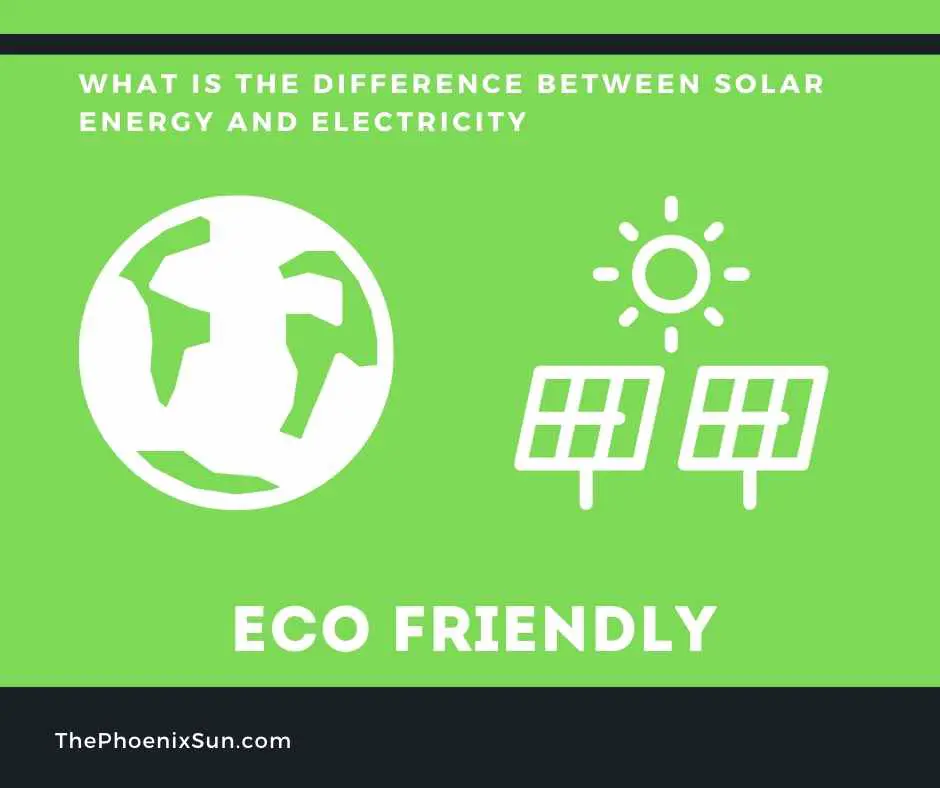
Energy sources are available in different forms. Some sources have limited stock and impact the environment, while others are eco-friendly.
Solar energy and conventional energy both contain several benefits and advantages. Ecofriendly production is considered one of the significant advantages of any energy resource.
Firstly, the energy source of solar electricity is the sun. It only requires solar panels and batteries, along with other small instruments. It doesn’t require burning or spoiling something. So, it is eco-friendly and profitable for nature.
Solar electricity depends on sunlight, and it turns heat into electric energy. It uses solar panels that can be used on the rooftop of a home or structure. The durability of these panels provides efficiency and long time working ability.
Secondly, conventional electricity can cause difficulty in the environment. We can’t mention it as an eco-friendly source of energy.
The production method and energy resource make the electricity harmful to the environment.
A power plant needs fossil fuel, petroleum, or natural gases to generate electricity.
The process requires the burning of these raw materials to produce electricity. It pollutes the air and increases the rate of carbon dioxide (CO2) in the atmosphere.
Renewable
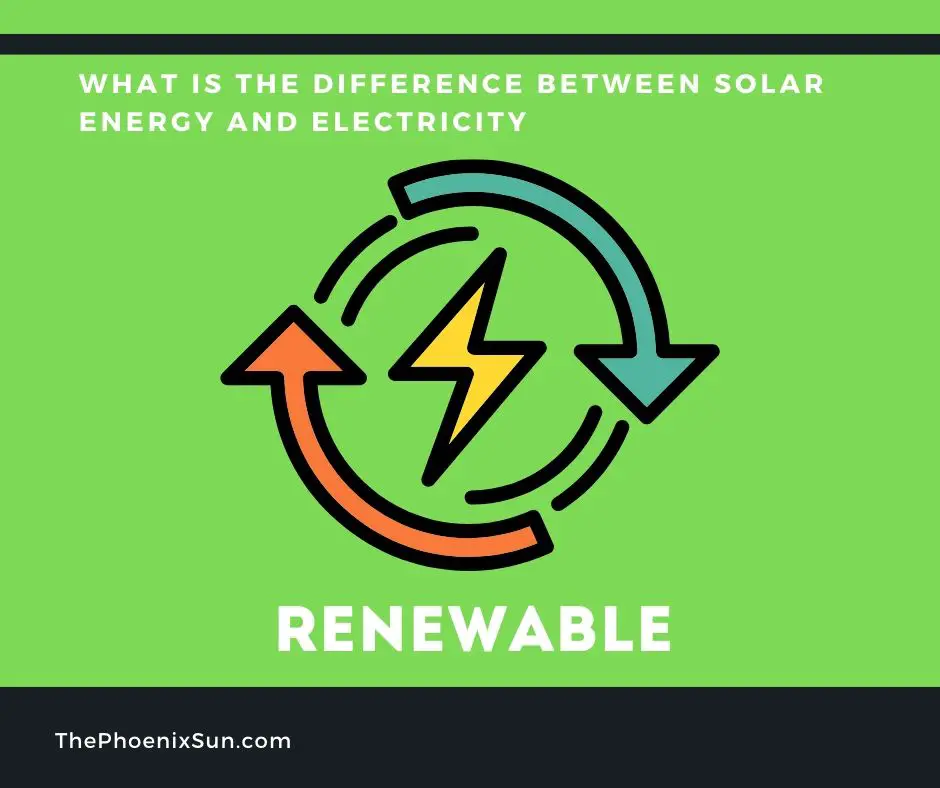
Renewable energy has changed the conception of energy resources. Solar energy is one of the significant renewable energy sources in the world.
Solar energy is generated by converting sunlight into electricity. It catches the sun’s rays directly by using photovoltaic panels.
Sun is the most powerful energy source, and the source is unlimited. This renewable energy makes electricity available around the world.
A solar panel and solar electricity can be installed in a remote area where sunlight is available. In the daytime, the sun provides lights to each place of the world. So, solar electricity is a perfect example of renewable energy.
On the contrary, electricity and its resources are not renewable. Its resources are limited, and the process pollutes the globe consistently.
Electricity production requires natural gases, petroleum, and fossil fuel. All the sources are limited and dependent on the supply chain. But solar energy is proficient and powerful.
So, solar electricity or energy is a perfect example of renewable energy.
Ability to Meet Human Need
People worldwide are using thousands of appliances and devices for their homes, offices, businesses, and personal benefits.
All the devices are powered by electricity. It may be direct electricity or stored electricity of batteries. With electricity, the world got power, and it can be considered the lifeline of civilization.
Renewable and conventional electricity both are demandable in the market.
At the same time, renewable energy like solar electricity is not enough to meet human needs. It requires extensive setup cost and space to produce a large amount of energy.
Electricity can supply powerful energy against excessive demand. It can meet human needs by providing high voltage electricity.
But the demand is different in various places. Solar energy is suitable for remote or hilly areas.
Wrapping UP
In conclusion, we can say that there are several differences between solar energy and electricity based on their production systems, installation processes, and costs.
Solar energy is renewable, and it has unlimited resources. The eco-friendly production system added extra benefits to it.
Electricity is more powerful than solar energy, and it pollutes the environment with limited resources.
But considering these differences, solar energy can reduce electricity costs and save our planet.
